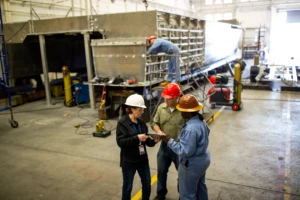Slashing school energy costs paves way for state grants in Arlington, MA
Until now, cutting energy costs for municipalities and schools has been limited to capital upgrades to infrastructure-replacing old, inefficient systems with newer energy-saving models. It’s been the low-hanging fruit for saving energy for many municipalities across the country for a long time.
When I learned about the energy savings that Darrell Smith, Director of Facilities and Energy at Microsoft, achieved at the company’s headquarters, I had to learn how he did it so I could put it into action in Arlington, Massachusetts. I knew the technology had the power to transform not only our town but municipalities across the country.
Smith told me about the Microsoft project and showed me how the fault detection and diagnostics technology (FDD) operated, drilling down to how each piece of equipment was functioning at that moment.
I realized this had real potential, and, even though the Town of Arlington isn’t Microsoft, I was going to make this happen. Smith introduced me to ICONICS, the Microsoft 2014 CityNext Partner of the Year, which is located only 45 minutes away in Foxborough. ICONICS provided the fault detection software, Facility AnalytiX, which is the brains of the system.
Working with ICONICS, we installed the Facility AnalytiX software in the Peirce School because that’s where the school district recently consolidated summer-school classes. We had already invested in a new chiller to air condition the entire elementary school. We created an Internet of Things system, tying the HVAC equipment sensors to the Internet and deploying Facility AnalytiX on Microsoft Azure, which allows us to store and analyze an incredible amount of data.
This is extremely sophisticated software managing very complex systems, but data is disseminated in a way that a layperson can understand and use. That’s important as we try to do more with less. We don’t have a mechanical engineer on staff and we aren’t super tech-savvy.
During the Peirce pilot, we reduced the time it took to find problems by at least 15 percent, and it reduced natural gas consumption in a colder-than-normal winter by 20 percent. I can’t wait until June when I can see full-year figures.
We now plan to roll it out to a second school, and our goal is to incorporate Facility AnalytiX into any school or town building we can. Any construction going forward will be “FDD ready.”
That includes the potential for a new high school, which we are discussing now. Arlington High School is the biggest consumer of energy in town due to its age, size, and configuration. In fiscal year 2014, the high school used 12,119 MMBTUs and emitted 1.5 million pounds of CO2. It consumed 25% more energy than our middle school. I’m looking forward to using FDD to lower those numbers.
Arlington’s energy savings were presented to the state, which is now considering allowing other Massachusetts municipalities designated as Green Communities to apply for fault detection software as part of its state-sponsored energy reduction funds. We really can’t buy more efficient boilers, but with FDD technology, we can actively manage energy consumption. It’s the next big thing for facilities management and smart, sustainable cities.
Read the full case story here.
Microsoft CityNext
Empowering more sustainable, prosperous, and economically competitive cities-with a simplified approach that puts people first! For more information please visit: www.microsoft.com/citynext
Have a comment or opinion on this post or a question for the author? Please let us know on Twitter.




